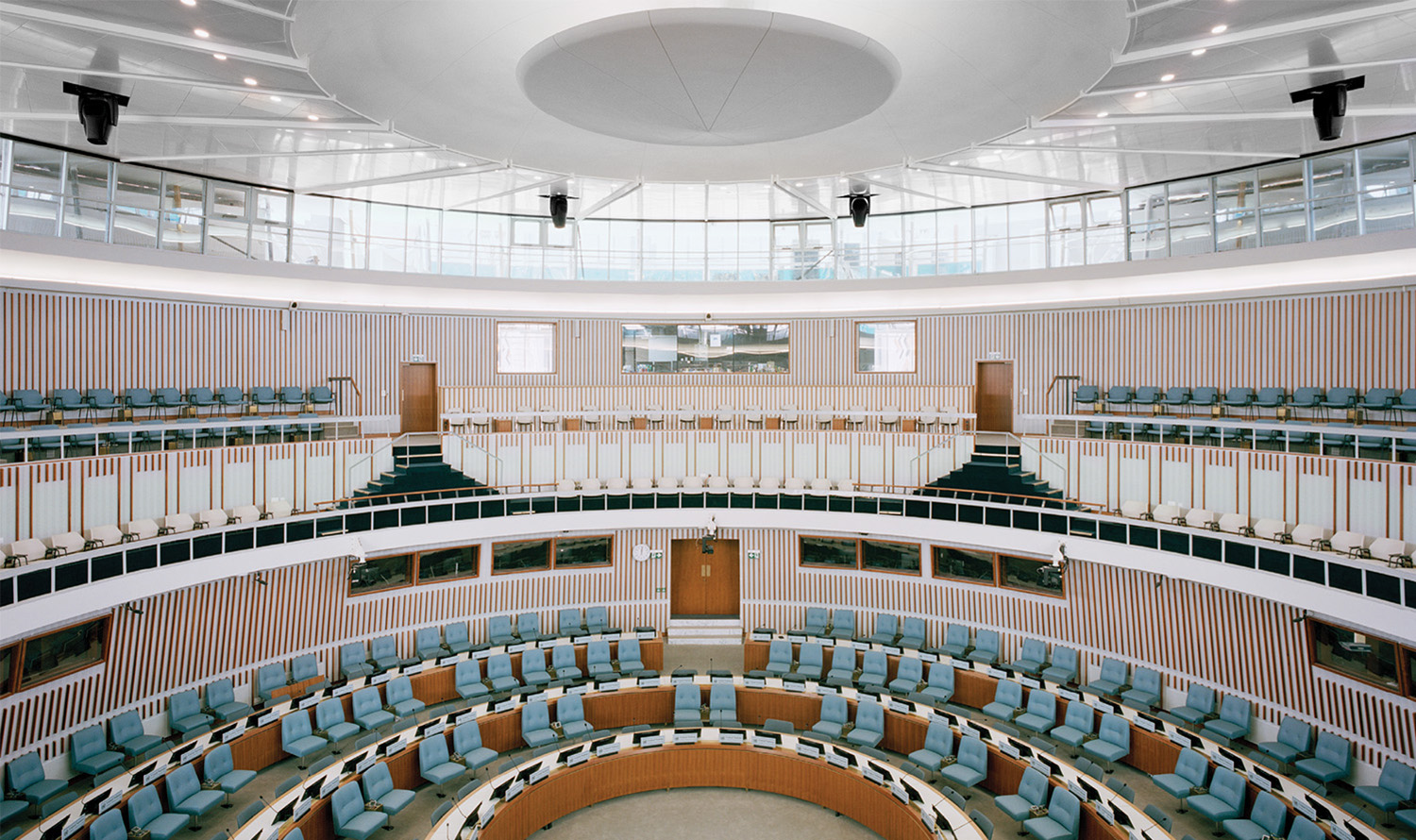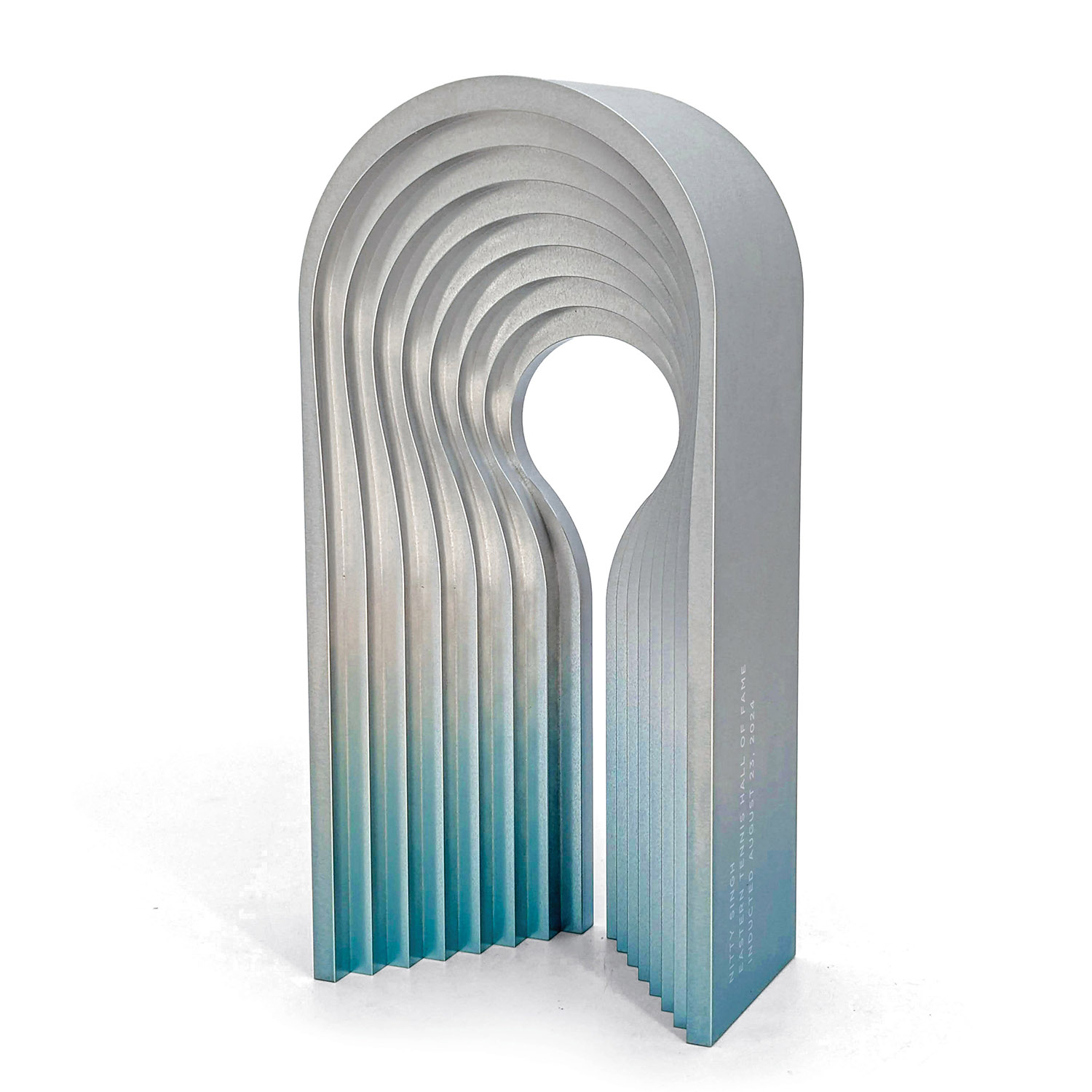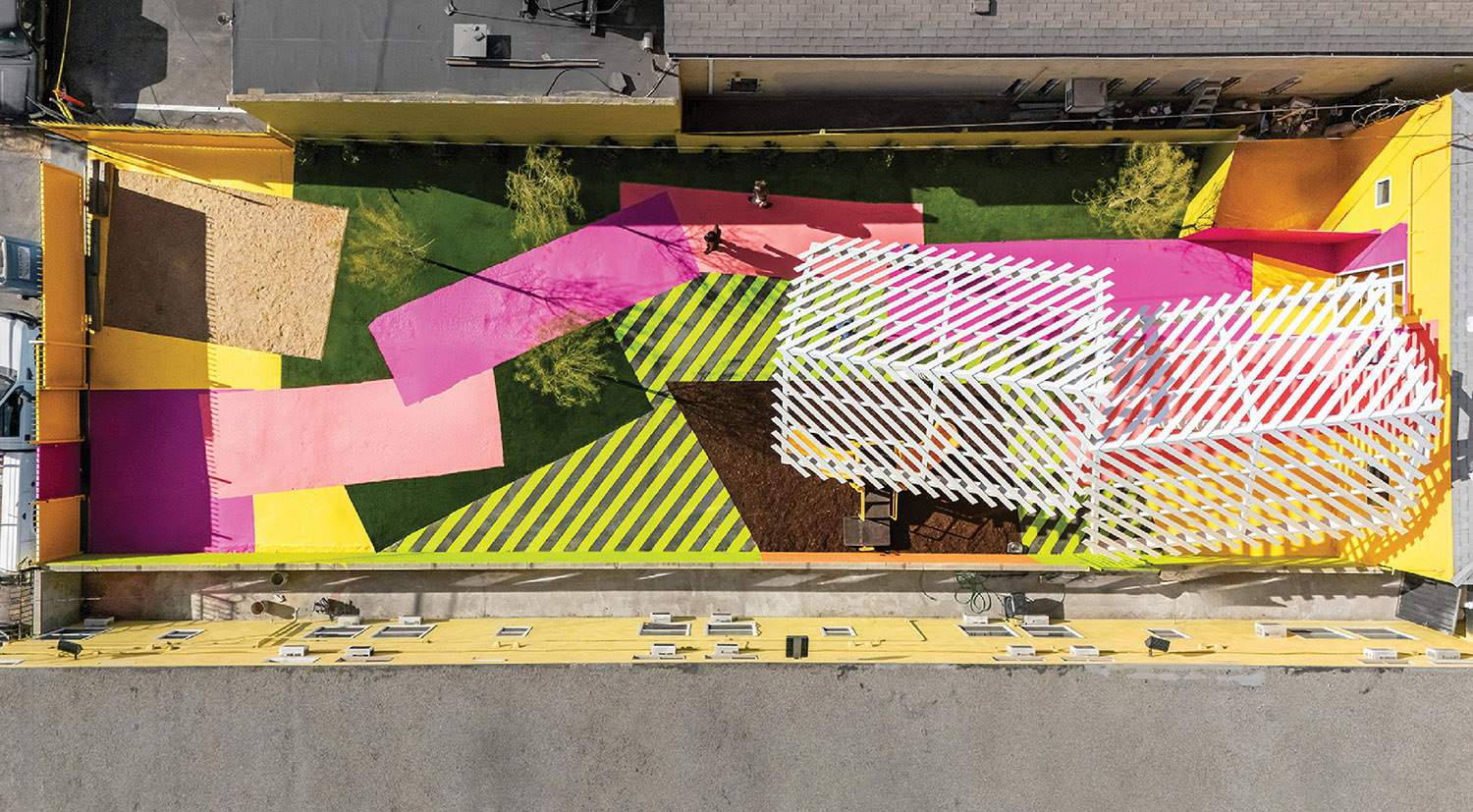Big Mac: Clive Wilkinson Designs Macquarie Group’s Massive Headquarters
Clive Wilkinson has spent decades researching, evaluating, and, yes, pushing the envelope of workplace design worldwide. And he dedicated much of the past three years to what is arguably his tour de force to date: the 10-story, 330,000-square-foot Macquarie Group headquarters a mere block from Australia’s Sydney harbor.
“Australians are a different breed. They’re feisty, not so hidebound,” the South African-born Los Angeles resident says. And Macquarie’s appetite for change corresponded with the bank’s huge size: managed assets worth the equivalent, in U.S. currency, of $305 billion. Wilkinson was hired, incidentally, despite his lack of experience in the financial-services sector. The rationale? “Our commissions frequently involve businesses in the process of radical transformation,” he explains.
Leaving behind a high-density, trading-floor environment that Macquarie’s head of workplace design, Anthony Henry, calls a “vanilla bench solution,” Macquarie made a revolutionary choice, opting for the dynamic, flexible system known as activity-based working. Unlike some dubious experiments in “hoteling,” activity-based working promises places for everyone. Just not a fixed place, in a fixed setting. The model is based on a rich mix of spaces that suit changing tasks. At Macquarie, each floor has solo and group areas, formal and informal venues, and, as one would expect from Clive Wilkinson Architects, some frankly cheeky lounges.
The initial catalyst for this extreme makeover was the real estate, a spec building that Fitzpatrick + Partners had designed but not yet built when Macquarie signed the lease for the entire property. This made it possible for all but the top three floors to be redesigned in accordance with the concepts of activity-based working. “We had the once-in-a-generation opportunity to take something from the ground up and grab it with both hands,” Henry notes. The building was also noteworthy for a diagonal steel grid on the facade and a virtually column-free interior.
What had planted the seed for activity-based working was a trip that Macquarie executives had recently taken to the headquarters of one of the system’s first proponents, the Dutch insurance company Interpolis. Once that tour occurred, there was no turning back. Activity-based working was deemed ideal for meeting Macquarie’s needs for transparency and interaction among the 2,500 employees in Sydney. Macquarie’s head of banking and financial services, Peter Maher, puts it like this: “The easiest way to drive and increase teamwork was to change the physical space.”
Since activity-based working entails movement, Wilkinson had to get people traveling through the building both horizontally and vertically. Of course, there’s a monumental stair, which hovers over the white Corian reception desk and extends upward through a central atrium’s 10 levels. Henry claims that the stair reduces elevator traffic by 50 percent and encourages serendipitous meetings. But meetings of a more arranged nature have their own attractions. Who wouldn’t be eager to discuss business and property acquisition or succession planning in a pod hanging, literally, in midair?
Cantilevered into the atrium, the meeting pods were inspired by shipping containers in Sydney harbor. “Our first idea was to have a gantry across the top of the atrium and move the pods around,” Wilkinson says. Then he got real. Those pods became fixed boxes. Some are themed, for instance the one with orientalist upholstered divans. Since not all are quite so easy to identify by decor, however, they’re numbered with vinyl decals in a crosshatch style that subtly refers to the building’s gridded facade.
The 26 pods are a draw not only in-house but also, in another operational shake-up, for Macquarie’s clientele. And because they’re sprinkled throughout instead of being limited to one level—as are 34 more conventional meeting spaces—precious little territory is off-limit to visitors. “It’s all on show,” Henry says. “Clive’s great at creating a sense of theater.”
Equally high-drama are the large lounges stacked in one corner. Conceived for group or solitary work, they’re designed to recall a library, playroom, tree house, dining room, coffeehouse, or garden—in Wilkinson’s inimitable manner. The library’s books are not actual tomes but row upon row of spines printed as wall covering. The dining table is an angular behemoth in white Corian. The tree house is an interlocking structure of birch plywood.
Sustainability plays a starring role as well. Workstations came from Macquarie’s previous headquarters. The air-conditioning is a chilled-beam, passive-cooling model that recycles water from deep in the harbor. “The dramatic amount of daylight,” Wilkinson says, is controlled by operable solar shades at each bay and an automated shade across the top of the atrium. He paid similar attention to materials such as sustainably harvested wood and low-VOC carpet tile. The base building has a six-star rating, the highest conferred by the Green Building Council of Australia; interiors are aiming for five stars.
For Macquarie, sustainable features are among the factors projected to add up to $98 million in savings over the next 10 years in the new location. For Wilkinson, the near future offers an enticing prospect of a different kind: no more 14-hour intercontinental flights.
Photography by Shannon McGrath.
PROJECT TEAM
John Meachem; Alexis Rappaport; Ruben Smudde; Neil Muntzel: Clive Wilkinson Architects. Woods Bagot: Architect of Record. Veldhoen + Company: Workplace Consultant. Vision Design: Lighting Consultant. EGG: Graphics Consultant. Cordless Group: Technology Consultant. Arup: Structural Engineer. WSP Lincolne Scott: MEP. Van & Son Detail Joinery: Woodwork. Brookfield Multiplex Group; Buildcorp Group: General Contractors.


